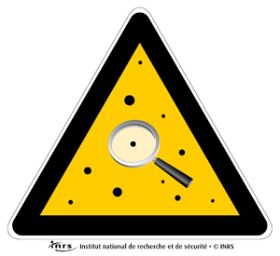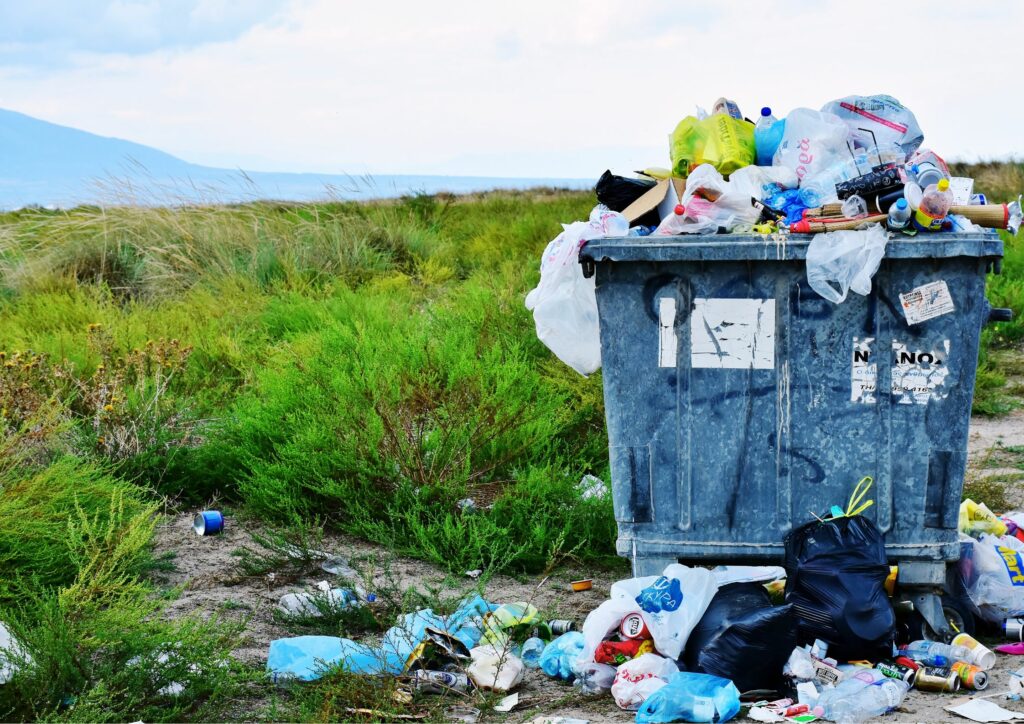
Scientists call for action on nano waste and associated risks
Researchers from the Adolphe Merkel Institute, the University of Fribourg and the EPFL, highlight the lack of explicit regulations to manage and control nano waste worldwide and propose recommendations to alleviate its potential environmental and health costs.
Nano waste, a big challenge
In an article published in the journal Nature Nanotechnology, scientists from the Adolphe Merkel Institute, the University of Freiburg and the Swiss Federal Institute of Technology Lausanne (EPFL) make a clear statement: it is no longer conceivable to ignore the large quantities of nanomaterials produced and used every year that eventually become nano waste. Today, they are largely accumulated in landfills, without appropriate management measures.
‘Nano waste’, although not conventionally defined, refers to manufacturing wastematerials, end-of-life products containing nanos or unintentionally contaminated with manufactured nanos.
Despite the specificities of substances at the nanoscale, linked in particular to their greater reactivity, there are still no specific measures for managing nano waste. This is particularly problematic for research institutes, which generate a significant proportion of nanowaste. Researchers should therefore have a primary role in raising awareness of nano waste management.
No explicit regulatory framework for the management of nano waste
The authors of the publication address in particular the political leaders of industry and research and call for a global consensus on the management of nano waste. The Basel Convention, ratified by 187 countries, regulates the movement and transport of hazardous waste. However, it makes no explicit reference to nano forms. It is essential to eliminate the grey areas, by explicitly integrating the problematic nanos forms in the annexes of the convention, or in a specific technical guide.
This management also involves the creation of a specific label for nanos and an harmonized categorization of nano waste. At present, there is no harmonized pictogram or code to indicate the presence of nanomaterials in waste and to ensure their proper storage and transport.

Pictogram created by INRS to indicate the presence of nanomaterials in a work area (workshop, laboratory…). However, it is not included in the regulations for occupational health and safety signs.
In the meantime, concrete measures are needed to mitigate the risks
Until global regulations are developed and nano-specific codes and pictograms are created as part of existing systems of classification and labeling1Such as the GHS (Globally Harmonized System of Classification and Labeling of Chemicals), or the ADR (Agreement Concerning the International Carriage of Dangerous Goods by Road), there is much that can already be done.
The authors propose a way to label and store nano wastes in accordance with national and international legislation on hazardous materials, integrating in their article illustrated examples for the storage and labeling of nano wastes. Regarding the disposal of nano waste, validated protocols for its recycling or destruction have yet to be developed.
More generally, and given the lack of information on the safety of the nano waste handled, the precautionary principle must prevail. Among the guiding principles that would allow a precautionary approach, the authors recommend:
- to make the definition of the term “nanomaterials” more flexible by also considering particles with a size < 500 nanometers, and not only those smaller than 100 nm
- manage risk upstream by promoting safe-by-design principles and experimental approaches that minimize the use of nanos
- otherwise, always consider and manage nano waste as hazardous substances.
- minimize aerosolization by generating liquid or polymer-incorporated nanowaste instead
- and promote low-energy inactivation processes for nano waste, or destroy the rest in a suitable waste treatment plant.
An underestimation of the quantity of nano waste?
This publication is a call to action by scientists, even though the estimate of annual global nanos production cited in the article appears to be greatly underestimated. In France alone, nearly 400,000 tons of nanos have been declared in the R-nano registry in 2019, representing a tonnage that is already much higher than the 260,000-309,000 tons estimated worldwide.
It therefore seems essential to improve, in parallel to the management of nanowaste, the knowledge on the use and production of nanos.
To be continued…

Upcoming Nano Agenda
- Awareness-raising aimed at personnel in contact with nanomaterials during research, formulation, production, maintenance, cleaning, upkeep, etc., as well as safety coordinators or engineers, facility managers, heads of laboratories where nanoparticles are handled.
- Organizers: INSTN Grenoble (CEA)
- On the agenda: potential impact on health; metrology and protection; control of potential risks associated with nanomaterials; consideration of societal aspects.
- Website: https://instn.cea.fr/formation/maitrise-des-risques-lies-aux-nanomateriaux-sensibilisation
- 16th meeting of the “nano and health” dialogue committee
- Organizer: ANSES
- Awareness-raising aimed at personnel in contact with nanomaterials during research, formulation, production, maintenance, cleaning, upkeep, etc., as well as safety coordinators or engineers, facility managers, heads of laboratories where nanoparticles are handled.
- Organizers: INSTN Grenoble (CEA)
- On the agenda: potential impact on health; metrology and protection; control of potential risks associated with nanomaterials; consideration of societal aspects.
- Website: https://instn.cea.fr/formation/maitrise-des-risques-lies-aux-nanomateriaux-sensibilisation
Notes and references
- 1Such as the GHS (Globally Harmonized System of Classification and Labeling of Chemicals), or the ADR (Agreement Concerning the International Carriage of Dangerous Goods by Road)



